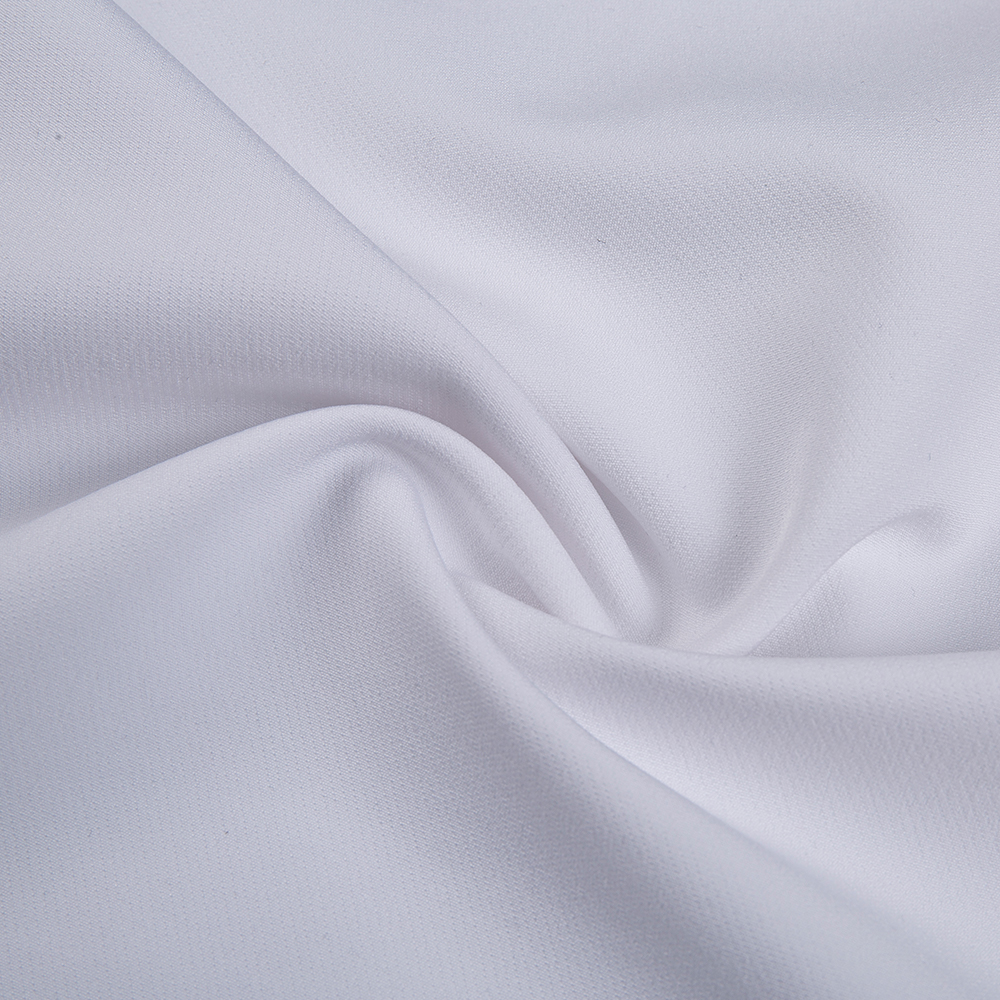Promoting sustainability in the manufacturing process of 4-way stretch fabric involves several key steps and practices aimed at reducing environmental impact and promoting responsible production. Here are some typical measures taken:
Use of Recycled Materials:Incorporating recycled polyester or other recycled fibers into the fabric production helps reduce dependence on virgin materials. This lowers energy consumption and decreases the overall carbon footprint of the fabric.
Efficient Use of Resources:Implementing technologies and practices that minimize water and energy usage during manufacturing processes, such as dyeing, finishing, and fabric construction.
Optimizing production processes to reduce waste generation and improve resource efficiency.
Chemical Management and Reduction:Adhering to strict chemical management protocols, including using eco-friendly dyes and chemicals that have minimal environmental impact and are safe for workers and consumers.
Implementing processes for chemical recycling or recovery to minimize chemical waste disposal.
Closed-Loop Systems:Establishing closed-loop systems for recycling water and chemicals within manufacturing facilities to reduce pollution and conserve resources.
Investing in wastewater treatment technologies to ensure that discharged water meets environmental standards before being released.
Certifications and Standards:Obtaining certifications and adhering to international standards that verify sustainable practices throughout the manufacturing supply chain, such as OEKO-TEX® Standard 100, GOTS (Global Organic Textile Standard), or bluesign® system.

Supply Chain Transparency:Collaborating with suppliers and partners to ensure transparency and accountability in the sourcing of raw materials, including traceability of fibers and compliance with social and environmental standards.
Engaging in initiatives that promote fair labor practices and support local communities where manufacturing facilities are located.
Product Durability and Longevity:Designing 4-way stretch fabrics that are durable, long-lasting, and resistant to wear and tear. This reduces the need for frequent replacements and extends the product lifecycle, thereby reducing overall environmental impact.
End-of-Life Considerations:Developing strategies for the recycling or reuse of 4-way stretch fabrics at the end of their lifecycle. This includes exploring options for fabric recycling, upcycling, or repurposing into new products to minimize landfill waste.
These steps collectively contribute to promoting sustainability in the manufacturing process of 4-way stretch fabric, aligning with industry efforts to reduce environmental footprint and support sustainable textile production practices.











